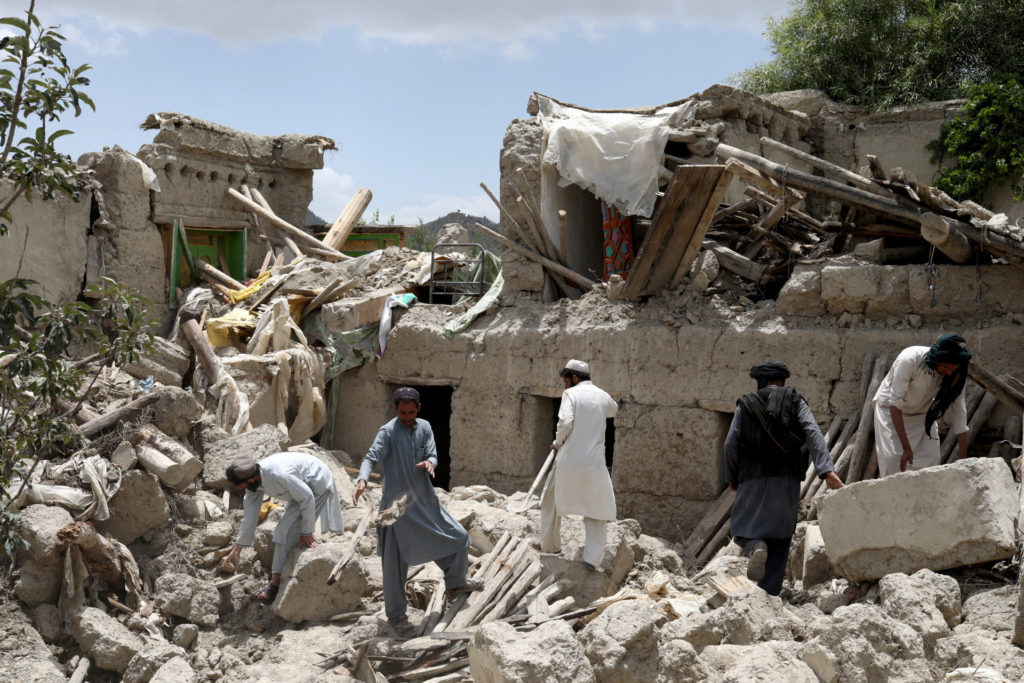
Late on Sunday night, as families were winding down in eastern Afghanistan, the ground suddenly shook with alarming force. A 6.3-magnitude earthquake struck near Jalalabad in Nangarhar Province, close to the border with Pakistan. The quake, recorded at a depth of nearly 160 kilometers, was powerful enough to send tremors across Afghanistan, Pakistan, and even parts of northern India.
While earthquakes are sadly familiar in this mountainous part of Asia, this event has already caused widespread alarm and tragic loss of life. Reports on casualties are still shifting as rescue workers struggle to reach remote areas. Early numbers ranged from nine deaths and a few dozen injuries to local estimates suggesting that hundreds may have been killed and many more injured. The wide range in figures reflects both the difficulties of gathering accurate data in Afghanistan’s rugged terrain and the lack of immediate communication from villages that were hardest hit.
The Night of the Quake
The earthquake struck just before midnight on August 31, 2025. Many people were at home resting or asleep when the first tremors began. Witnesses in Jalalabad described the ground shaking for what felt like a long time, with furniture rattling, walls creaking, and neighbors rushing out into the streets in fear. In Kabul, over 150 kilometers away, people also felt the tremors strongly enough to wake them from sleep.
In Islamabad and Peshawar, across the border in Pakistan, residents reported swaying ceiling fans and light fixtures. Some ran outdoors, fearing buildings might collapse. Although the depth of the quake generally reduces surface destruction, Afghanistan’s fragile infrastructure makes even moderate seismic activity dangerous. Poorly constructed homes of mud brick or stone can crumble easily, trapping families inside.
Casualty Reports and Confusion
Within hours of the quake, Afghan authorities began releasing statements. Initial official figures confirmed at least nine people had died and more than 25 were injured. But as daylight came, provincial officials suggested the toll was much higher, with 20 confirmed deaths and more than 100 injuries in Nangarhar and surrounding provinces.
By mid-morning on Monday, some humanitarian groups and Taliban government representatives indicated the numbers could be even more severe—upwards of 250 fatalities and over 500 people wounded. These figures remain unverified but highlight how rapidly situations can escalate in rural Afghanistan. Mountain villages, often accessible only by rough tracks, may take days to report casualties.
Aftershocks and Ongoing Fear
Not long after the main quake, a smaller tremor of magnitude 4.7 was recorded at a depth of 140 kilometers. Though weaker, aftershocks intensified public fear. Families who had spent the night outdoors in parks, open fields, or courtyards were reluctant to return indoors, worried that their already damaged homes might collapse if the ground shook again.
Seismologists explained that because the quake originated deep underground, the immediate surface impact was less destructive than a shallow quake of similar magnitude. Yet the scale of the disaster is worsened by Afghanistan’s vulnerability: crowded housing, poor construction materials, and limited emergency services.
Regional Tremors
Beyond Afghanistan’s borders, tremors were widely felt in northern Pakistan, including in the cities of Islamabad, Rawalpindi, and Peshawar. Social media posts from Indian states like Jammu and Kashmir also reported mild shaking. While no major damage was reported outside Afghanistan, the widespread reach of the tremors underscored the quake’s force.
The Indian National Centre for Seismology and global monitoring stations confirmed the magnitude and depth, helping neighboring countries quickly assess the risk of further seismic activity.
Rescue Challenges
Afghanistan’s emergency response capacity remains limited. Since the Taliban takeover in 2021, international aid has been sharply reduced, leaving fewer resources for disaster relief. Local authorities quickly dispatched rescue teams, but reaching remote mountain villages is an enormous challenge. Roads are often in poor condition or blocked by landslides triggered by quakes. Helicopters are scarce, and medical facilities are under-equipped to handle mass casualties.
Eyewitness accounts from Jalalabad described scenes of chaos: families digging through rubble with their hands, neighbors forming chains to rescue trapped victims, and hospitals struggling to treat the wounded with limited supplies. Doctors reported shortages of medicine, bandages, and even clean water for patients.
Global Concern
The quake has drawn international attention, with humanitarian groups calling for urgent assistance. Organizations like the Red Crescent and UN agencies have begun assessing the situation. Pakistan’s authorities offered to provide cross-border aid if requested, and Indian officials expressed readiness to help as well.
Earthquakes in Afghanistan are not new. Just two years ago, in June 2023, a devastating quake in Paktika Province killed more than 1,000 people and left thousands homeless. The memory of that disaster remains fresh, and Sunday night’s tremors revived deep fears among Afghans who know too well how quickly tragedy can strike.
The Road to Recovery
As rescue operations continue, the true human toll of the quake will become clearer. The coming days will reveal how many villages were affected, how many homes collapsed, and how many lives were lost. Aid agencies stress that survivors urgently need shelter, food, clean water, and medical care.
This disaster is yet another reminder of Afghanistan’s fragile position when it comes to natural hazards. Its mountainous terrain, active fault lines, and vulnerable infrastructure mean that earthquakes will always pose a serious risk. Without stronger housing standards, better preparedness, and consistent international support, tragedies like this one are likely to repeat in the years ahead.
The 6.3-magnitude earthquake that jolted Afghanistan on August 31 has once again shown the fragility of life in a region where the earth shakes too often and the resources to recover are too scarce. While numbers remain uncertain, the stories emerging—from families rushing into the streets at midnight to neighbors digging through rubble—paint a picture of resilience amid fear. For many Afghans, the night of the quake will be remembered not only for the ground’s violent shaking but also for the struggle to hold their lives together in its aftermath.






